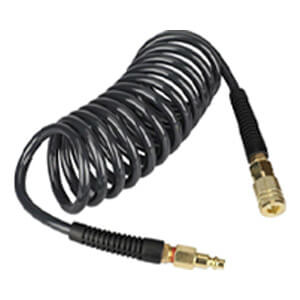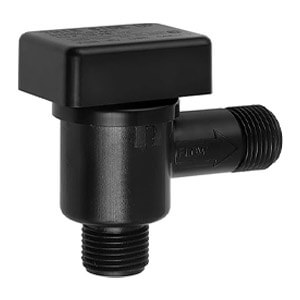Have you at any given time found your air compressor capability insufficient for the job? Perhaps you are using high-output pneumatic tools or working on a large project that requires extra volume of air. Don’t buy a giant super expensive air compressor you need two smaller ones and connect them Together you can get larger quantity of air this way for less money than buying a new system entirely.
How to use two air compressors together? Follow this step by step guide to learn how to operate two air compressors at the same time and get the best out of your systems.
Why Use Two Air Compressors Together?
Your process will run more efficiently when you link two compressors together since they create added benefits. High-demand pneumatic tools require enhanced airflow capacity as the primary reason to connect two air compressors. Two smaller compressors yield better value than purchasing one large unit so you can connect them for better performance.
This double compressor arrangement lets you use either machine independently for compact tasks when necessary. Dividering work between two machines helps prolong equipment life span while slowing down wear and tear. The combination of compressors delivers an optimal solution for industrial, automotive as well as DIY projects.
Important Considerations When Using Two Air Compressors
- Matching CFM and PSI Ratings:
The maximum performance outcome happens when both compressors match each other’s CFM and PSI ratings to maintain balanced operation.
- Using Check Valves:
Check valves serve as protective devices by stopping fluid movement in the wrong direction which protects both compressors from electrical overload.
- Balancing Air Pressure:
The operational harmony between compressors depends on proper pressure adjustments which stop their interference with each other.
- Regular Maintenance:
Regular maintenance procedures for both compressors that include tank moisture drainage and leak detection work to extend their life along with improved efficiency.
Methods to Connect Two Air Compressors Together
Method 1: Using a T-Fitting (Parallel Connection)
The easiest method, and standard practice where both compressors are allowed to work side by side equally.
Essential Tools and Equipment You’ll Need
| T-fitting |  |
| Hoses to connect both compressors |  |
| A check valve to prevent backflow |  |
Steps to Connect Compressors Using the Parallel Method:
- Turn Off and Depressurize the Compressors: Safety first ensure both units are off and fully depressurized.
- Attach a Check Valve to Each Compressor: This is to prevent the return of air into one compressor from the other.
- Connect the T-Fitting: The hoses from both compressors will be attached to the T-fitting or Y-connector.
- Connect the Output Hose: Now, the airflow will come out through one hose; this combined airflow can be connected to your tools or air distribution system.
- Power On and Test: Turn on both compressors and check for leaks. Adjust pressure settings if necessary.

Method 2: Using Separate Tools (Series Connection)
This method increases pressure instead of airflow, suitable for applications requiring more PSI.
Essential Tools You’ll Need
| Air Hoses |  |
| Check Valves |  |
| Pressure Regulators |  |
| Quick-Connect Fittings |  |
Steps to Connect in Series:
Connect First Compressor to Second Compressor: This means the second compressor gets air from the first, which increases pressure.
Monitor Pressure Ratings: Ensure the second compressor can handle the increased input pressure.
Adjust Regulators Accordingly: This prevents over-pressurization that could damage the system.
Test for Efficiency: Ensure the setup delivers the desired air pressure to your tools. Check for leaks, properly adjust the regulators, and make sure both compressors work harmoniously to provide steady airflow.
Pros and Cons of Using Two Air Compressors
Pros:
- Increased Airflow (CFM): Simply connecting two compressors gives a combined airflow to run all of your high demand tools without burnouts.
- Cost-Effective Solution: Unlike buying an expensive larger compressor, you can get same performance by using two small compressors.
- Greater Flexibility: You can run the compressors together for heavy tasks or split them and use each as needed to be superefficient.
- Reduced Wear and Tear: Two compressors share the load, leading to less weight on one single unit and ultimately longer life span for both.
- Improved Backup System: For in case any of the compressor is damaged, single function, other can still work & not hindering complete down time.
Cons:
- Complex Setup: It takes more fittings, hoses, and check valves to connect two compressors. It can be time-consuming when you try to set it up.
- Uneven Load Distribution: When used in a single pair one compressor has greater load than other one it drive inefficiency and may result damage.
- Higher Maintenance Requirements: Keeping two Compressors requires more work, higher energy consumption and cost with repair.
Conclusion
Two air compressors used together provide an effective way to enhance airflow as well as pressure levels without requiring a more expensive large unit. Proper setup along with precaution measures will create a safe and effective system when air compressors are connected either parallel for volume increase or series for pressure elevation.
The combination of pressure-setting knowledge and check valves connected properly with your system enables optimized compressed air usage which enhances project performance.
FAQ’s
Is it possible to link two different air compressor brands?
It is possible. You can connect a new compressor to another compressor. Make sure you have the right fittings and check valves to keep the airflow in order. Most brands are compatible; slight differences don’t matter much.
Do I need a check valve when using two air compressors?
Yes, check valves are important to stop backflow from one compressor to the other. The check valves help in the functioning of both compressors smoothly and suddenly issue of pressure and protect against compressor damage.
Will using two compressors double my air pressure?
Joining compressors boosts airflow (CFM) but does not increase pressure (PSI) The only way to increase PSI is to put them in a series where one feeds into the other, however, the pressure will most likely be too high for the second compressor.
Can I use a single pressure regulator for two compressors?
Although if it is doable, it is best to use individual regulators on each compressor, before the combination of the airflow. This will let you better distribute the air pressure from the regulators to the with no imbalance.


